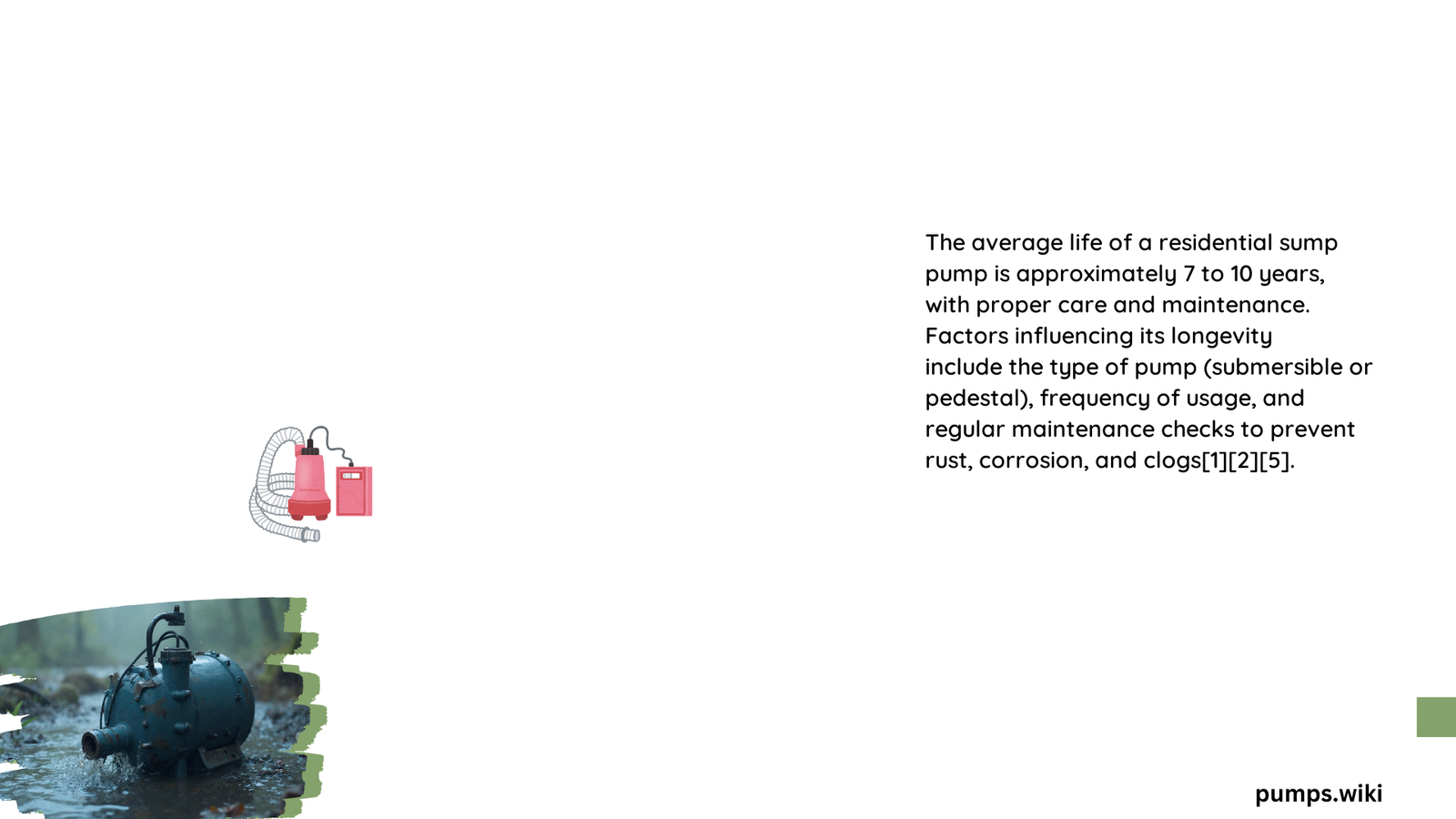Residential sump pumps are critical home protection devices that typically last between 7 to 10 years. Homeowners can expect varying lifespans depending on pump type, usage frequency, maintenance practices, and environmental conditions. Understanding these factors helps predict when replacement might become necessary and prevents potential water damage risks.
What Determines the Average Life of Residential Sump Pump?
Sump pumps are not created equal, and their longevity depends on multiple interconnected factors. Let’s explore the key elements that influence their operational lifespan.
How Do Different Pump Types Impact Durability?
| Pump Type | Average Lifespan | Key Characteristics |
|---|---|---|
| Submersible Pumps | 5-15 years | Operates underwater, higher corrosion risk |
| Pedestal Pumps | 15-25 years | Motor above water, less mechanical stress |
What Materials Contribute to Longer Pump Life?
Pump construction materials significantly impact durability:
- Cast Iron Pumps:
- Superior corrosion resistance
- Longer operational life
-
Better heat dissipation
-
Stainless Steel Pumps:
- Excellent rust prevention
- Lightweight design
- Moderate to high durability
What Maintenance Practices Extend Sump Pump Lifespan?
Proactive maintenance can dramatically increase your sump pump’s operational years:
- Annual Professional Inspection
- Verify electrical connections
- Check float mechanism
-
Assess overall pump condition
-
Regular Cleaning
- Remove sediment buildup
- Clear debris from pump basin
-
Inspect for potential wear points
-
Battery Backup System
- Ensures continuous operation during power outages
- Reduces mechanical stress during critical moments
How Do Environmental Factors Influence Pump Performance?
External conditions play a crucial role in determining sump pump longevity:
- High Water Table Regions: More frequent pump cycles
- Flood-Prone Areas: Increased mechanical stress
- Basement Humidity Levels: Potential accelerated corrosion
What Are Warning Signs of Impending Pump Failure?
Homeowners should monitor these critical indicators:
- Unusual grinding or rattling noises
- Frequent cycling on/off
- Visible rust or corrosion
- Inconsistent water removal
- Motor struggling to activate
Expert Recommendations for Maximizing Sump Pump Life

- Replace Every 7-10 Years: Proactive replacement prevents unexpected failures
- Invest in Quality: Higher-end models offer better durability
- Professional Installation: Ensures optimal performance
- Consider Backup Systems: Provides redundancy during critical moments
Cost Considerations
The average replacement cost ranges from $500 to $1,500, depending on pump type and complexity of installation. Investing in regular maintenance can help avoid more expensive water damage repairs.
Final Thoughts
Understanding the average life of a residential sump pump empowers homeowners to make informed decisions about maintenance, replacement, and protection against potential water damage.
Quick Reference Guide
- Typical Lifespan: 7-10 years
- Best Practices: Annual inspection, clean environment
- Warning Signs: Unusual noises, inconsistent performance
Reference:
– Sump Pump Maintenance Guide
– Homeowner’s Water Protection Manual
